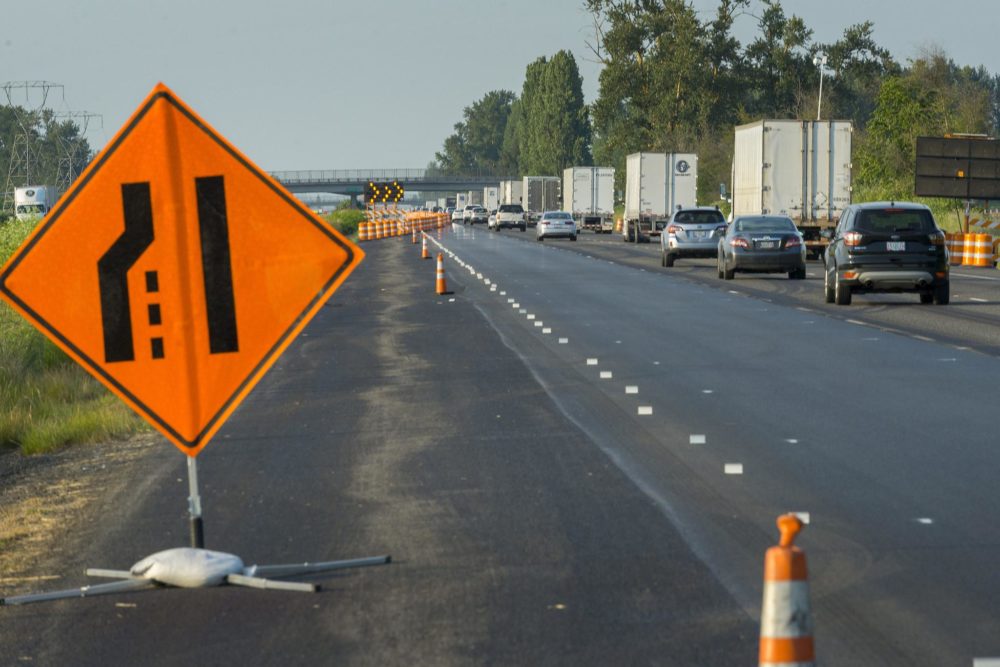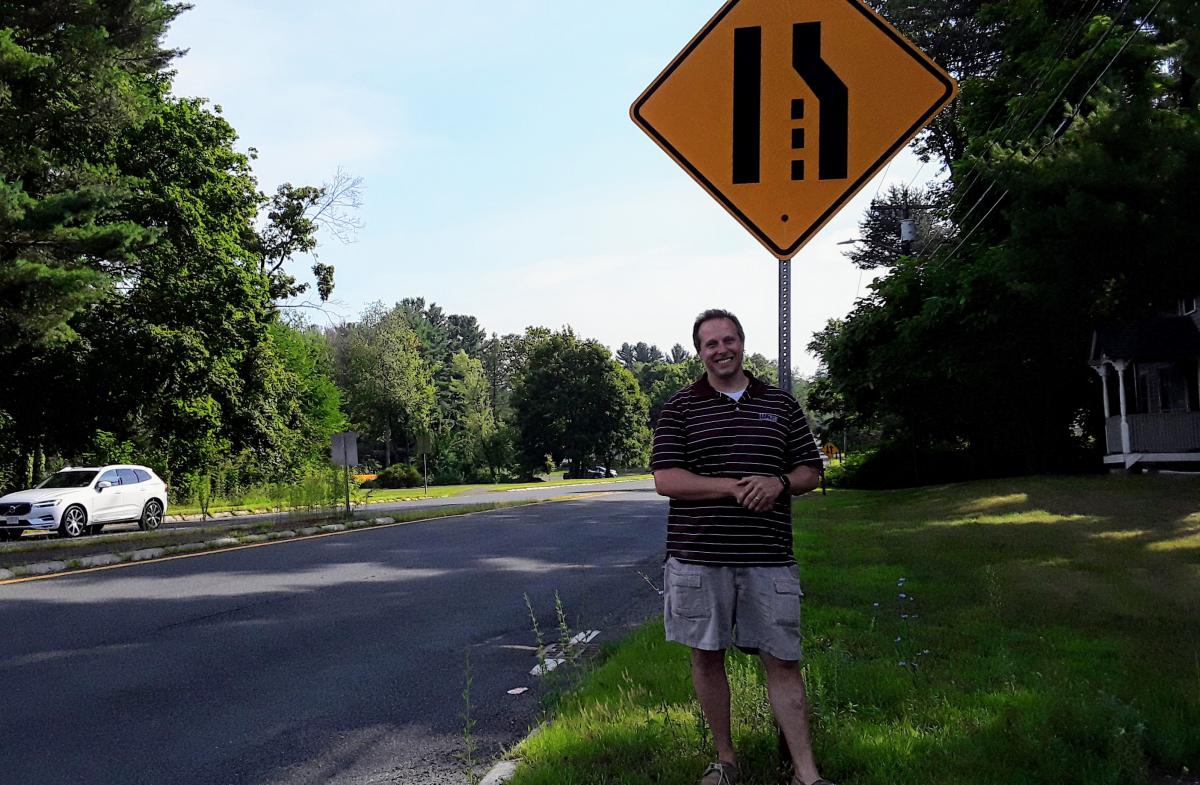Advertisement
The 'Zipper Merge' May Seem Aggressive, But It's Actually A Highway Congestion Reliever
Resume
Wherever you may be driving this summer, there will likely be lane closures for road construction and the need to merge. Traffic engineers have been espousing the "zipper merge" in high-volume construction areas for years.
Research shows the zipper — which is a late merge, using both lanes as long as possible, not moving over right away — is often safer and will keep traffic flowing. The problem is, among your fellow drivers, it's not the most popular move.
It's also not the easiest to explain.
A 2016 video from the Kansas Department of Transportation features a couple of orange traffic cones talking by the side of the road as they watch cars and trucks move down a highway.
There's a lane closure ahead. Traffic is slowing to a crawl. One cone says to the other, “It doesn't have to be this way, if they just did a zipper merge!”
“When drivers come up to a lane closure, they tend to get over early — which makes one long slow line, and one mostly empty lane,” the cone continues.
“But shouldn't you move over as soon as you see the merge sign?” the other cone asks.
“Not always,” says the wise cone. “When traffic is really backed up, the best thing to do is not merge early. If all drivers would just slow down and drive in both lanes, then take turns merging into the through lane, like teeth on a zipper, everyone would be better off.”
Traffic engineers recommend the zipper merge not just on super highways, but also on roads like Route 9 in Massachusetts.
On a recent morning in Amherst, Mike Knodler, a civil engineer and director of the Traffic Safety Research Program at UMass Amherst, stood by the side of the road next to a yellow merge sign.
“We have a regular joke, which is you can't be an outstanding traffic engineer unless you're out, standing in traffic,” Knodler said.

Knodler watched cars proceed through a traffic light and merge from two lanes to one.
“This group seems to alternate merging, and it worked perfectly because they did sort of sequence — it was 1:1,” Knodler said.
That meant a driver let another go in front, an abbreviated zipper merge. Knodler and other engineers say the maneuver has the potential to improve roadway safety and efficiency.
Whether or not they know about the zipper merge, some drivers stay in the lane that will be shut down as long as possible, since it moves faster.
But the majority don’t.
That includes Edgardo Amaros, who was at the Springfield Registry of Motor Vehicles on a recent afternoon with his son, who had just taken his driving exam.
“I would move over right away,” Amaros said. “Because I might not have the opportunity to do so [later].”
Amaros had heard of the zipper merge — and he's not opposed to it, but he hasn't taught it to his son yet. There are so many rules to remember for a new driver, and so many people on the road.
“You’ve got a lot of people that are impatient,” he said.
Temperament may be less of a problem in the Upper Midwest, where the zipper merge has more of a following. But that can cut both ways.
"We have a thing in Minnesota," said Jake Loesch with the Minnesota Department of Transportation. "You might have heard of it before — called 'Minnesota nice.'"
"Minnesota nice" is the opposite of how Massachusetts drivers are described.
Loesch said Minnesota was among the first states in the nation to officially adopt and actively promote the zipper merge — with billboards, social media, bumper stickers and electronic signs that say, “Merge Here! Take Turns.”
Still, Loesch said, there's an ongoing challenge.
“The reality of the zipper merge is that it is a bit counter-intuitive,” he said.
In part, no matter what the research says, not everyone believes it.
And for many, merging late doesn't feel fair, since so few people are doing it. It makes early mergers mad. Some will straddle both lanes to block oncoming drivers.
But Ana Muriel, who commutes on Interstate 91 between Longmeadow and Amherst, doesn't care what people think. Muriel is a logistics researcher, and knows a lot about efficiency.
"My major focus is on production environments and also health care," Muriel said. "So this was my application to transportation, just because I was sitting there and suffering through it."
Even before she learned the zipper merge was a thing, stuck in traffic around Springfield and Boston, Muriel knew merging late made better sense.
Earlier this year, Muriel wrote a letter about the zipper merge to The New York Times. It didn't get published, but she is still trying to get the word out to anyone who will listen, and she’s seen the zipper merge work elsewhere.
“I'm from Spain,” Muriel said. “And there, people will be selfish. You are going to see all the lanes equally used.”
Culture influences behavior, and so does identity. NiCole Buchanan, a psychology professor at Michigan State University, studies how race and gender relate to well-being.
“It's not as simple as just telling people turn in at the end,” she said.
Overall, people of color spend a lot of time making decisions to reduce the likelihood someone will assume they're doing wrong, Buchanan said. Anyone who feels marginalized will consider the consequences of merging late.
"It's not just about whether or not it's legal," she said. "It's about the peers driving alongside you, and their perception of what you're doing."
The zipper merge is legal, but there’s no universal campaign to educate drivers.
Minnesota has done more than most states. Many states, including Massachusetts and Connecticut, endorse the zipper merge on congested roadways when a lot of cars are moving slow.
When they need to, highway workers will haul out the portable electronic message signs telling drivers to "merge late."
But will they?
This story was originally published by New England Public Radio.
This segment aired on August 19, 2019.
